2nd century

| Year | Event | Historical events |
|---|---|---|
|
|
This is a timeline of science fiction as a literary tradition. While the date of the start of science fiction is debated, this list includes a range of Ancient, Medieval, and Renaissance-era precursors and proto-science fiction as well, as long as these examples include typical science fiction themes and topoi such as travel to outer space and encounter with alien life-forms.

| Year | Event | Historical events |
|---|---|---|
|
|

| Year | Event | Historical events |
|---|---|---|
|
| |
|
| |
| Year | Event | Historical events |
|---|---|---|
| c. 1270 |
|
|
| Year | Event | Historical events |
|---|---|---|
| 1420 |
| Some 15th century writers imitated the 14th century author Geoffrey Chaucer (1340 -1400), such as John Lydgate and Thomas Hoccleve. Notable poets include Stephen Hawes, Alexander Barclay, William Dunbar, Robert Henryson, and Gawin Douglas. John Skelton wrote ironic and satirical works which blended Medieval and Renaissance styles. |
 Title page of the 1628 edition of Bacon's New Atlantis | |
| Author | Francis Bacon |
|---|---|
| Country | United Kingdom |
| Language | Latin/English |
| Genre | Utopian novel |
Publication date | 1624/1626 |
| Media type | Print (hardback) |
| Pages | 46 pp |
| Text | New Atlantis at Wikisource |

| Year | Event | Historical events |
|---|---|---|
| 1619 |
|
|
| 1623 |
|
|
| 1627 |
|
|
| 1634 |
|
|
| 1638 |
|
|
| 1656 | ||
| 1657 |
|
|
| 1666 |
|
|
| 1686 |
| |
| Year | Event | Historical events |
|---|---|---|
| 1726 |
| |
| 1733 |
| |
| 1741 |
|
|
| 1752 |
|
|
| 1765 |
| |
| 1771 |
|
|
| 1780 |
|
|
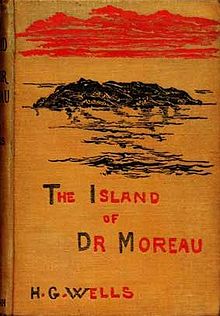 First edition cover | |
| Author | H. G. Wells |
|---|---|
| Country | United Kingdom |
| Language | English |
| Genre | Science fiction |
| Publisher | Heinemann, Stone & Kimball |
Publication date | 1896 |
| Media type | Print (hardcover) |
| Pages | 209 p. |
| Preceded by | The Wonderful Visit |
| Followed by | The Wheels of Chance |
| Text | The Island of Doctor Moreau at Wikisource |
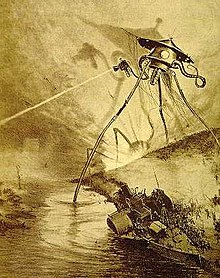
| Year | Event | Historical events |
|---|---|---|
| 1900 |
|
|
| 1901 |
| |
| 1902 |
| |
| 1903 |
|
|
| 1905 |
|
|
| 1907 |
|
|
| 1909 |
|
|
 Serialized in Modern Electrics | |
| Author | Hugo Gernsback |
|---|---|
| Country | United States |
| Language | English |
| Genre | Science fiction novel |
Publication date | 1911 |
| Media type | Print (hardback & paperback) |
| Preceded by | none |
| Followed by | none |
 Cover of the pulp magazine Amazing Stories , featuring Master Mind of Mars | |
| Author | Edgar Rice Burroughs |
|---|---|
| Cover artist | Frank R. Paul |
| Country | United States |
| Language | English |
| Subject | Barsoom |
| Genre | Science fiction |
| Preceded by | The Chessmen of Mars |
| Followed by | A Fighting Man of Mars |
| Text | [[s:The Master Mind of Mars|The Master Mind of Mars]] at Wikisource |
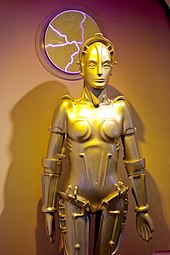

| Year | Event | Historical events |
|---|---|---|
| 1930 |
|
|
| 1931 |
| |
| 1932 |
|
|
| 1933 |
|
|
| 1934 |
| |
| 1935 |
|
|
| 1936 |
| |
| 1937 |
|
|
| 1938 |
|
|
| 1939 |
|
|
| Year | Event | Historical events |
|---|---|---|
| 1940 |
|
|
| 1941 |
|
|
| 1942 |
| |
| 1943 |
|
|
| 1944 |
|
|
| 1945 |
|
|
| 1946 |
| |
| 1947 |
|
|
| 1948 |
|
|
| 1949 |
|
|
| Year | Event | Historical events |
|---|---|---|
| 1950 |
|
|
| 1951 |
|
|
| 1952 |
|
|
| 1953 |
| |
| 1954 |
|
|
| 1955 |
| |
| 1956 |
| |
| 1957 |
| |
| 1958 |
|
|
| 1959 |
|
|
| Year | Event | Historical events |
|---|---|---|
| 1970 |
|
|
| 1971 |
|
|
| 1972 |
|
|
| 1973 |
|
|
| 1974 |
|
|
| 1975 |
|
|
| 1976 |
|
|
| 1977 |
|
|
| 1978 |
|
|
| 1979 |
|
|
| Year | Event | Historical events |
|---|---|---|
| 1990 |
|
|
| 1991 |
|
|
| 1992 |
|
|
| 1993 |
|
|
| 1994 |
|
|
| 1995 |
|
|
| 1996 |
| |
| 1997 |
| |
| 1998 |
| |
| 1999 |
|
|
| Year | Event | Historical events |
|---|---|---|
| 2000 |
| |
| 2001 |
|
|
| 2002 |
| |
| 2003 |
|
|
| 2004 |
| |
| 2005 |
|
|
| 2006 |
| |
| 2007 |
|
|
| 2008 |
|
|
| 2009 |
|
| Year | Event | Historical events |
|---|---|---|
| 2010 |
|
|
| 2011 |
|
|
| 2012 |
| |
| 2013 |
|
|
| 2014 |
|
|
| 2015 |
|
|
| 2016 |
|
|
| 2017 |
|
|
| 2018 |
|
|
| 2019 |
|
|
| Year | Event | Historical Events |
|---|---|---|
| 2020 |
|
|
| 2021 |
|
|
| 2022 |
|
|

John Thomas Sladek was an American science fiction author, known for his satirical and surreal novels.

Children's fantasy is children's literature with fantasy elements: fantasy intended for young readers. It may also mean fantasy read by children, regardless of the intended audience.

The Encyclopedia of Science Fiction (SFE) is an English language reference work on science fiction, first published in 1979. It has won the Hugo, Locus and British SF Awards. Two print editions appeared in 1979 and 1993. A third, continuously revised, edition was published online from 2011; a change of web host was announced as the launch of a fourth edition in 2021.

A fictional currency is some form of system of money defined, depicted, or alluded to, in works of fiction, such as novels, films or video games. The names of units of such currency are sometimes based on extant or historic currencies while other names, such as "Kalganids" in Asimov's Foundation series, may be wholly invented. A particularly common type, especially in science fiction, is electronically managed "credits". In some works of fiction, exchange media other than money are used. These are not currency as such, but rather nonstandard media of exchange used to avoid the difficulties of ensuring "double coincidence of wants" in a barter system.
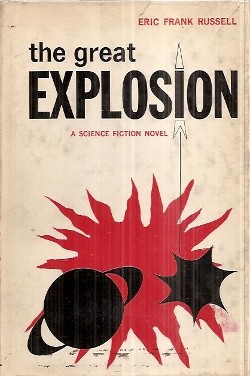
The Great Explosion is a satirical science fiction novel by English writer Eric Frank Russell, first published in 1962. The story is divided into three sections. The final section is based on Russell's 1951 short story "...And Then There Were None". Twenty-three years after the novel was published, it won a Prometheus Hall of Fame Award.
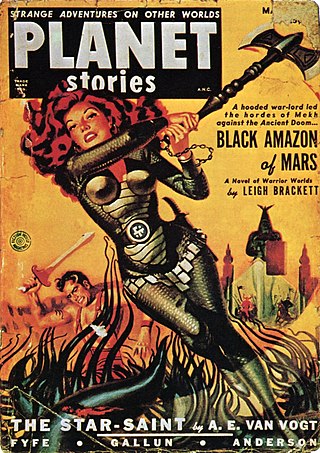
Planet Stories was an American pulp science fiction magazine, published by Fiction House between 1939 and 1955. It featured interplanetary adventures, both in space and on some other planets, and was initially focused on a young readership. Malcolm Reiss was editor or editor-in-chief for all of its 71 issues. Planet Stories was launched at the same time as Planet Comics, the success of which probably helped to fund the early issues of Planet Stories. Planet Stories did not pay well enough to regularly attract the leading science fiction writers of the day, but occasionally obtained work from well-known authors, including Isaac Asimov and Clifford D. Simak. In 1952 Planet Stories published Philip K. Dick's first sale, and printed four more of his stories over the next three years.

Pavane is an alternative history science fiction fix-up novel by British writer Keith Roberts, first published by Rupert Hart-Davis Ltd in 1968. Most of the original stories were published in Impulse. An additional story, "The White Boat", was added in later editions.
Edward Frederick James is a British scholar of medieval history and science fiction. He is Emeritus Professor of Medieval History at University College, Dublin. James received the Hugo Award for his non-fiction book The Cambridge Companion to Science Fiction, and the Pilgrim Award for lifetime contribution to SF and fantasy scholarship.
In science fiction, a time viewer, temporal viewer, or chronoscope is a device that allows another point in time to be observed. The concept has appeared since the late 19th century, constituting a significant yet relatively obscure subgenre of time travel fiction and appearing in various media including literature, cinema, and television. Stories usually explain the technology by referencing cutting-edge science, though sometimes invoking the supernatural instead. Most commonly only the past can be observed, though occasionally time viewers capable of showing the future appear; these devices are sometimes limited in terms of what information about the future can be obtained. Other variations on the concept include being able to listen to the past but not view it.
Andrew M. Butler is a British academic who teaches film, media and cultural studies at Canterbury Christ Church University. He is a former editor of Vector, the critical journal of the British Science Fiction Association, and was membership secretary of the Science Fiction Foundation. He is a former Arthur C. Clarke Award judge and is now a member of the Serendip Foundation which administers the award.
Richard Neil Barron was a science fiction bibliographer and scholar. His training was as a librarian. He is perhaps best known for his book Anatomy of Wonder: A Critical Guide to Science Fiction. He won the Pilgrim Award for Lifetime Achievement in the field of science fiction scholarship in 1982. He died on September 5, 2010, in Las Vegas, Nevada.

Farah Jane Mendlesohn is a British academic historian, writer on speculative fiction, and active member of science fiction fandom. Mendlesohn is best-known for their 2008 book Rhetorics of Fantasy, which classifies fantasy literature into four modes based on how the fantastic enters the story. Their work as editor includes the Cambridge Companions to science fiction and fantasy, collaborations with Edward James. The science fiction volume won a Hugo Award. Mendlesohn is also known for books on the history of fantasy, including Children's Fantasy Literature: An Introduction, co-written with Michael Levy. It was the first work to trace the genre's 500-year history and won the World Fantasy Award.
Science fiction studies is the common name for the academic discipline that studies and researches the history, culture, and works of science fiction and, more broadly, speculative fiction.
David Bruce Norman is a British paleontologist, currently the main curator of vertebrate paleontology at the Sedgwick Museum, Cambridge University. From 1991 to 2011, Norman has also been the Sedgwick Museum's director.

Bone Dance is a 1991 novel by American writer Emma Bull, described variously as fantasy, hard science fiction and cyberpunk. It was nominated for the Hugo, Nebula and World Fantasy Awards in 1992.
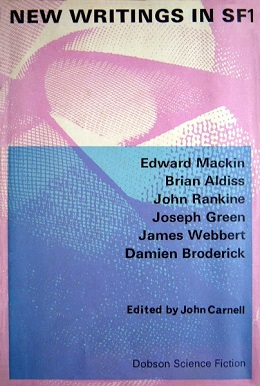
New Writings in SF was a series of thirty British science fiction original anthologies published from 1964 to 1977 under the successive editorships of John Carnell from 1964 to 1972 and Kenneth Bulmer from 1973 to 1977. There were in addition four special volumes compiling material from the regular volumes. The series showcased the work of mostly British and Commonwealth science fiction authors, and "provided a forum for a generation of newer authors."

Fantasy is a genre of speculative fiction involving magical elements, typically set in a fictional universe and usually inspired by mythology or folklore. The term "fantasy" can also be used to describe a "work of this genre", usually literary.

Nebula Science Fiction was the first Scottish science fiction magazine. It was published from 1952 to 1959, and was edited by Peter Hamilton, a young Scot who was able to take advantage of spare capacity at his parents' printing company, Crownpoint, to launch the magazine. Because Hamilton could only print Nebula when Crownpoint had no other work, the schedule was initially erratic. In 1955 he moved the printing to a Dublin-based firm, and the schedule became a little more regular, with a steady monthly run beginning in 1958 that lasted into the following year. Nebula's circulation was international, with only a quarter of the sales in the United Kingdom; this led to disaster when South Africa and Australia imposed import controls on foreign periodicals at the end of the 1950s. Excise duties imposed in the UK added to Hamilton's financial burdens, and he was rapidly forced to close the magazine. The last issue was dated June 1959.
Greer Ilene Gilman is an American author of fantasy stories.
Judith Clute is a Canadian painter, graphic designer, print-maker, and illustrator who has created cover art and illustrations for a number of well-known science fiction authors and magazines. Clute has British citizenship and works in London. She is also a tour guide with the Original London Walks.
{{cite book}}: CS1 maint: location missing publisher (link) CS1 maint: multiple names: authors list (link) CS1 maint: numeric names: authors list (link){{cite book}}: CS1 maint: location missing publisher (link)